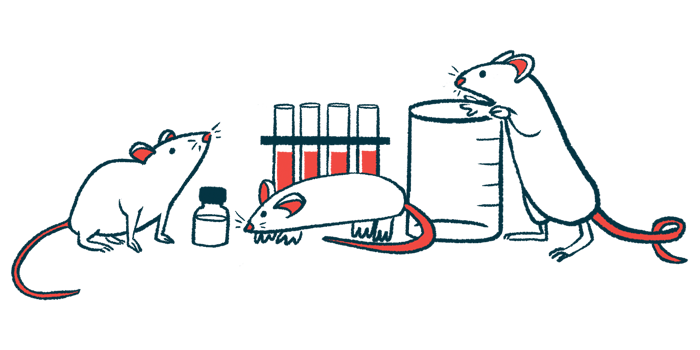Enzyme in Neutrophils May Be Therapeutic Target for EBA: Study
Taking away SYK enzyme stopped EB type from developing in mice

New study findings point to neutrophils, a type of immune cells, as possible players in epidermolysis bullosa acquisita (EBA) — and to an enzyme in them as a potential therapeutic target for the autoimmune disease.
Taking away that enzyme, called spleen tyrosine kinase or SYK, from neutrophils stopped EBA from developing in mice, the study found.
The “loss of [SYK] resulted in a complete protection in the experimental EBA model,” the researchers wrote.
The study, “Neutrophil-specific Syk expression is crucial for skin disease in experimental epidermolysis bullosa acquisita,” was published in the Journal of Investigative Dermatology.
SYK enzyme a potential therapeutic target: study
EBA is a type of epidermolysis bullosa that occurs when the body makes autoantibodies against a protein called type VII collagen. This protein is a major component of the anchoring structures that hold the two top layers of the skin — called the dermis and epidermis — together.
When autoantibodies bind to type VII collagen, the dermis and epidermis can no longer hold together firmly and will blister in response to even minor trauma or friction.
The exact reason why the body makes autoantibodies against type VII collagen in the first place is unknown. What is known from mouse models of the disease is that SYK may play a role.
Previous work in a mouse model of EBA has shown that SYK can hold sway over the inflammatory response that is set off by myeloid cells — which have a major role in innate immune responses.
Now, a team of researchers in Hungary set out to zero in on the type of cells where SYK plays most of its role in EBA. To do this, they turned to a mouse model in which EBA is induced by injection of antibodies against type VII collagen.
In healthy (wild-type) mice, this resulted in skin changes that took over larger areas over time. But in mice where Syk, the mouse form of the gene that codes for SYK, had been cut out from cells in the bone marrow, EBA never developed.
The researchers also observed a buildup of neutrophils in the skin of wild-type mice, but not in the skin of mice lacking SYK in bone marrow cells.
Neutrophils are a type of granulocytes that help keep the body healthy by traveling to sites of inflammation, where they fight off microbes and other foreign material. They also boost the response of other immune cells.
Next, the researchers continued their study in mice lacking SYK only in neutrophils. These mice had as many neutrophils in the bone marrow or the bloodstream as wild-type mice.
But just like mice where Syk had been cut out from bone marrow cells, they were shielded against the development of EBA. Compared with wild-type mice that went on to develop EBA, they also had fewer neutrophils and inflammatory molecules building up in the skin.
These results point to a crucial role for [SYK] in neutrophils in the development and progression of epidermolysis bullosa acquisita and suggest [SYK] inhibition as a potential therapeutic strategy.
Lab-grown SYK-lacking neutrophils were unable to release CXCL2 and IL-1beta, two molecules with a crucial regulatory role in inflammation that are involved other immune cells’ activation ad recruitment.
Blocking the activity of SYK using either of two known SYK-specific inhibitors called entospletinib and lanraplenib kept neutrophils from adhering to a surface covered with a complex made up of type VII collagen linked to its antibodies. It also kept the dermis from separating from the epidermis in samples of human skin.
“Taken together, these results point to a crucial role for [SYK] in neutrophils in the development and progression of epidermolysis bullosa acquisita and suggest [SYK] inhibition as a potential therapeutic strategy,” the researchers wrote.






